|
Welcome to my newly revised painting guide! Let me take a moment to apologize to everyone who has used square-jar enamel paints on soft plastic and ended up with a sticky, never-drying, toxic mess. And to those of you who used Apple Barrel/Folk Art acrylics that are made for porous surfaces like wood or plaster and flake right off of plastic. I wish I could have gotten this guide out to you sooner. But don't give up! Read on and I'll set you on the right path to choosing the correct paints. Perspective
Preparation
Brushes
Paints
Buy Testors Model Master acrylic paints Buy Formula P3 paints by Privateer Press Other paints you can use are Citadel/Games Workshop, Vallejo Model Color, and War Games paints. These need a primer coat (Bulldog or Duplicolor adhesion promoter) or basecoat of Testors/P3 for them to stick properly to bare plastic. You will also need to topcoat Games Workshop to keep it from wearing off. My choice of topcoat is the line of Mr Hobby Premium sealers that will magically transform the surface of your figure into a factory finish, no kidding. The flat will make the paint resemble a Figma/Figuarts high grade finish and the semigloss is indistinguishable from a factory plastic look. Before you buy them off my Amazon link try checking USA Gundam Store and The Spray Gunner because if you can catch them in stock (or have them send you an email when they receive them) they're waaay cheaper. Speaking of paints here's a quick rundown of the types and properties of the most common ones used. PVC Chinese factory paints: Lacquer Paints: Acrylic Paints: Enamels: Now with that out of the way I'll turn you over to Spidey who will take you through the basic painting steps. 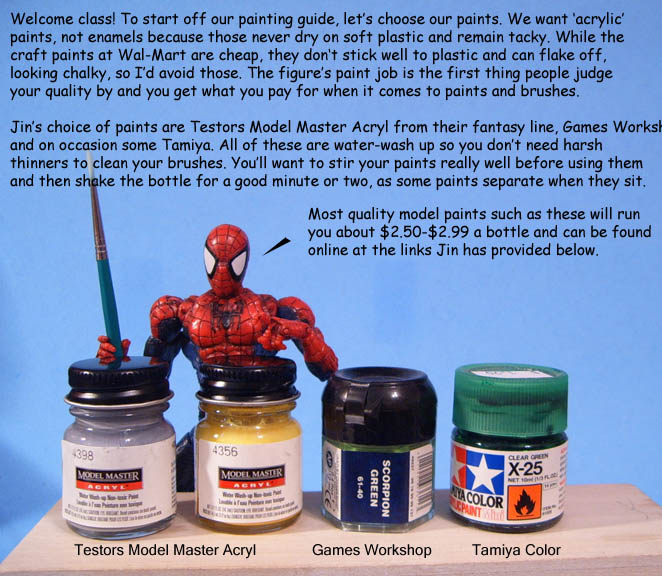 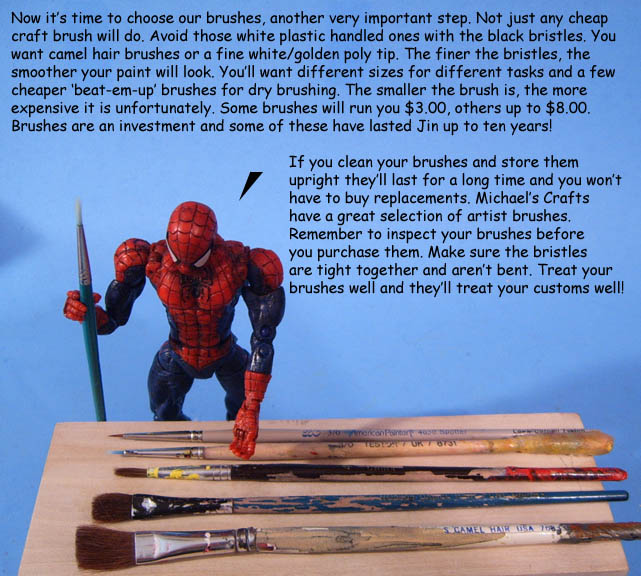 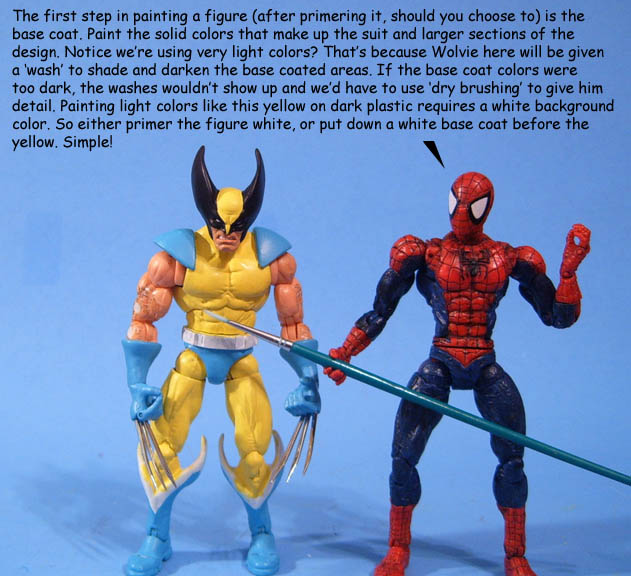 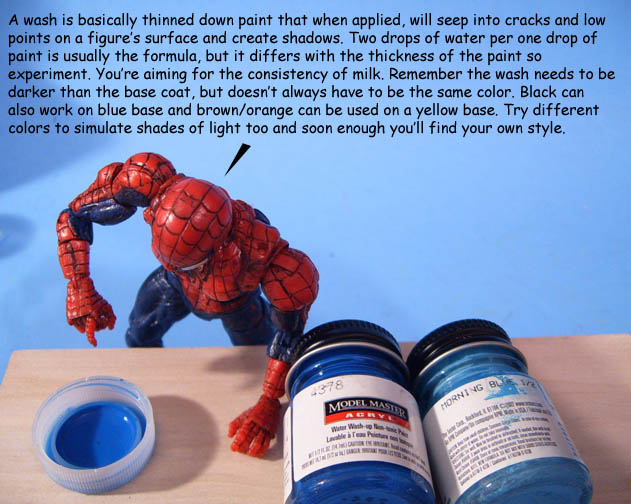 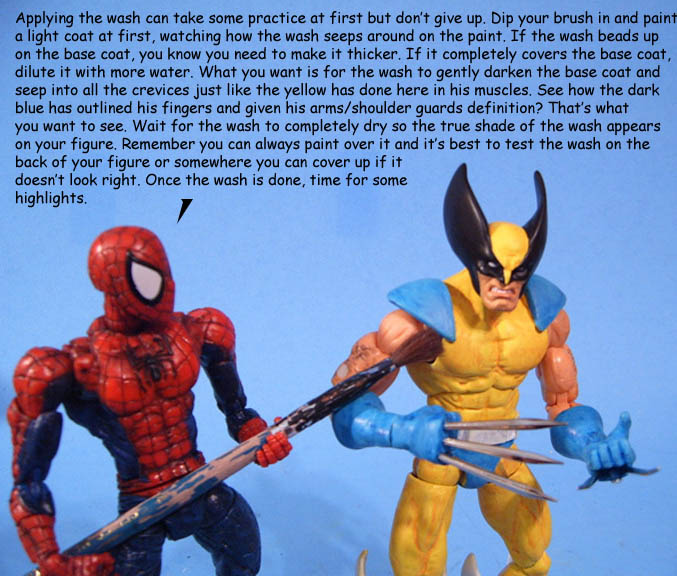 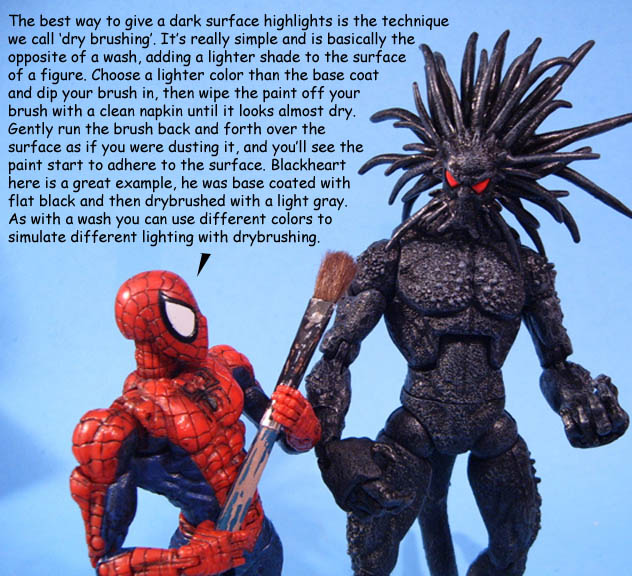 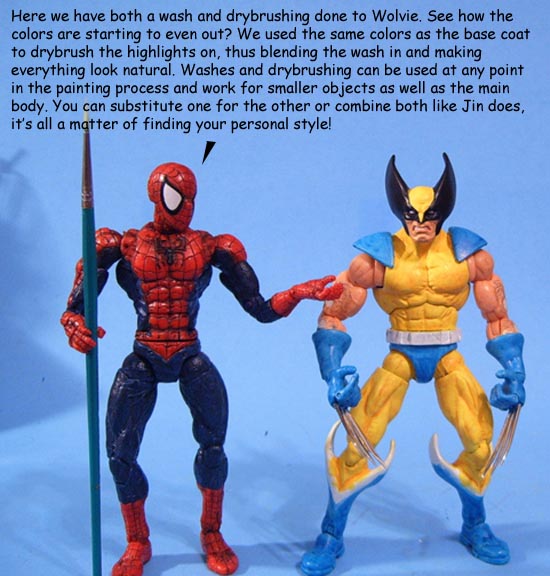 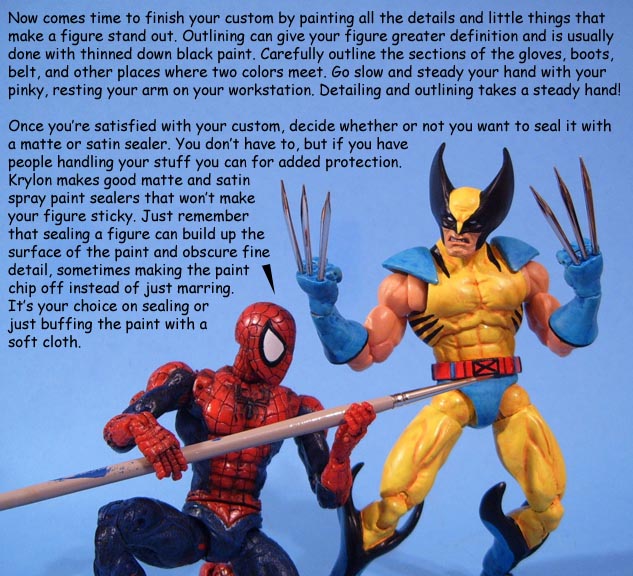 Important Painting Tips! Use multiple thin coats instead of one thick coat. This not only gives a super smooth look to the finished product, it also helps with durability. Thinning your paint is easy, just add a few drops of filtered/distilled water and mix them up really well. I give all my figures 2-4 coats depending on how much the base color shows through. This will give you super clean paint applications too on details sections like eyes, lips, etc. Almost all my paints are thinned down in the jar before use. Stir your paints well each time you use them if they become separated. I use the other end of my paintbrush with colors like skin tones, yellows, all metallics, and earth colors. Many testors base colors like black/white/red/blues don't separate easily, but I still give those a shake. Avoid shaking paints that you can see where they've separated and become watery. Stir those first and then shake them, otherwise you could end up with bubbles on your figure. When using a lighter color than the base figure (say yellow on top of a black Bullseye body) put a couple coats of white down as a base coat or primer the figure white. Dark base color show up through the paint and unless you're going for a really dark shade of your main color, white or a light grey is the best base coat. Normally I don't need to seal my customs but for those of you who want that extra protection against hand oils/dust I recommend 'Krylon Crystal Clear Acrylic' spray sealer. Either the matte or satin works but I find Gloss can be too thick sometimes. I use this on Transformers and Marvel Legends when needed. However do NOT use it on soft rubber! This means you need to cover up or remove all soft rubber capes, hoods, collars, etc. Every other plastic type I've tried is fine but it will make those soft rubber parts sticky. Tamiya also makes a spray Lacquer sealer that works great. A small drop of rubbing alcohol in a wash can help the wash stick to the figure better if you find the wash is beading up on the surface. The alcohol helps break the surface tension of the wash so it adheres better in some cases. People often use a drop of windex as well. When painting flesh tones use very thin coats. You can pre-mix skin tones or use the wash-method. For the wash start with a base coat of Testors Light Flesh (my favorite)and once dry do a wash of Testors Skin Tone Tint Warm over that. Another option is to mix some Burnt Sienna in with the original flesh tone and make a wash of that to put over the base flesh color. Either way you're looking to deepen the color of the flesh by use of a wash. Mixing some green in with the flesh helps with Italian skin tone, and some orange helps with a tan tone. I keep about 8 different flesh tones from Testors and Games Workshop on hand. The 'Paint Wipe' technique This is one of my favorite techniques to get a great unique look to your figures. You can read about the technique in my Paint Wipe Guide here. 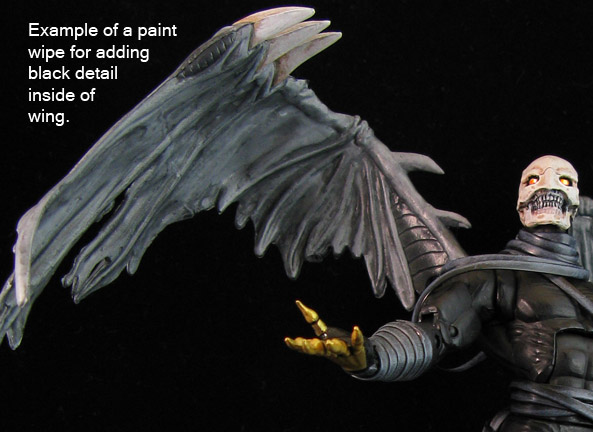
Metallic Colors Here's a neat trick to getting glossy metallic colors. Base coat the figure all silver (I use Formula P3 Quicksilver or Tamiya Lacquer Chrome/silver). You can also do silver drybrushing or wash darker paint on beforehand so it has shadows. Once the silver basecoat is dry paint on a Tamiya clear color. Yellow will make gold and the other colors will turn out metallic letting the silver shine through as you see in the picture below. 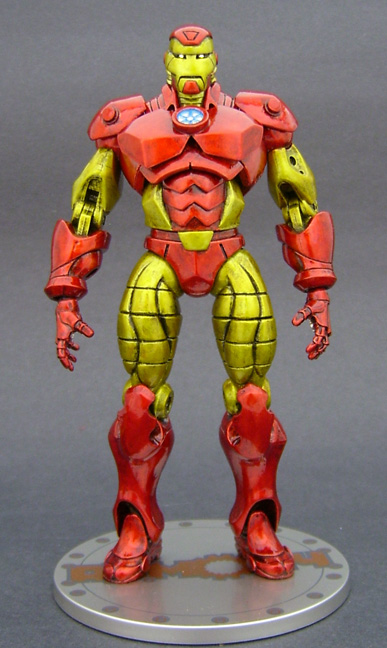
Remember all these techniques I've showed you can be used together to help you make your masterpiece. Experiment with different shades and effects. There's a million different ways to paint and you'll soon find your style. Looking for other custom action figures made by awesome customizers around the world? Click your favorite series below to be taken to this week's offerings! |
|


